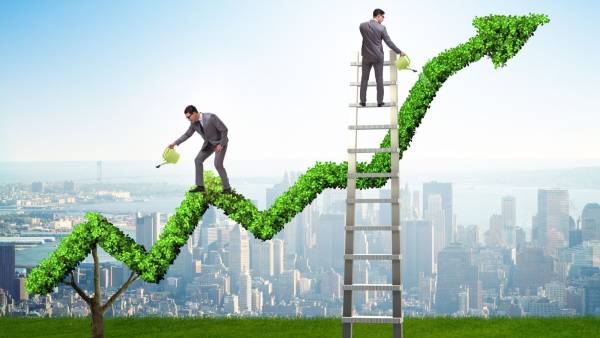Money, they say, is a mirror of our priorities. In a world grappling with climate change, biodiversity loss, and widening inequality, more and more investors — especially Millennials and Gen Z — are asking a vital question: Il mio denaro può fare del bene e allo stesso tempo fare del bene?
This is where green investing steps in. It’s not a trend or a marketing gimmick. It’s a growing movement that seeks to align financial returns with environmental and social impact. And in 2025, it’s never been easier — or more important — to make sure your investments reflect your values.
So how do you build a portfolio that supports a sustainable world and still grows your wealth? Let’s break it down.
L'ascesa degli investimenti verdi ed ESG
The term “green investing” often overlaps with ESG (Environmental, Social, and Governance) investing — a framework used to assess companies not just on their financial metrics, but also on how they treat the planet, people, and ethical governance practices.
By the end of 2024, global assets in ESG funds surpassed $ 11 trillion, according to Morningstar. In Europe alone — the global leader in sustainable finance — ESG funds represented over 20% of total assets under management.
Più che una semplice decisione morale, l'ESG e gli investimenti verdi stanno diventando delle operazioni finanziarie strategiche. È stato dimostrato che le aziende con un forte rating ESG sono più resistenti durante le flessioni del mercato e spesso superano le performance dei loro concorrenti nel lungo periodo. Uno studio di MSCI del 2023 ha rilevato che i leader ESG hanno in media una volatilità inferiore di 15% e hanno sovraperformato i loro benchmark di 1,5% all'anno su un periodo di 5 anni.
Cosa conta come verde? Guardare oltre l'etichetta
Not all funds labeled “green” are truly sustainable. It’s important to look under the hood. Does the fund invest in renewable energy, energy-efficient technologies, or clean transportation? Or does it simply avoid tobacco and weapons?
Alcune delle opzioni più mirate includono:
- Obbligazioni verdi: Strumenti di debito utilizzati esclusivamente per finanziare progetti ecologici.
- ETF tematici: Fondi che si concentrano su acqua pulita, energia solare, veicoli elettrici o modelli di economia circolare.
- Piattaforme di investimento ad impatto: Dove è possibile finanziare direttamente progetti o startup con benefici ambientali o sociali misurabili.
Ricordate che le valutazioni ESG variano a seconda del fornitore, quindi scavate più a fondo del punteggio superficiale. Ad esempio, Tesla può ottenere un buon punteggio dal punto di vista ambientale, ma può ricevere voti contrastanti per quanto riguarda le questioni di governance o di lavoro.
Bilanciare valori e rendimenti
A common concern among new green investors is: “Will I sacrifice returns?” The data says — not necessarily. In fact, 2023 was a strong year for renewable energy funds and ESG ETFs. iShares Global Clean Energy ETF, for instance, gained over 12% in 2023 after a flat 2022, driven by increasing global demand for solar, wind, and electric mobility.
That said, green investing still involves sector-specific risks. Renewable energy stocks can be volatile, and ESG funds may underperform during fossil fuel rallies. But when viewed with a long-term horizon, many sustainable portfolios offer competitive — and often lower-risk — returns.
The key is diversification. You can include ESG-aligned holdings while still having exposure to broader markets, using a “core and satellite” strategy. For example: hold a global ESG ETF for broad diversification, and then add thematic funds (like clean tech or biodiversity) as satellites.
Come iniziare a investire nel verde come investitore al dettaglio
You don’t need to be a professional or have € 50,000 to start aligning your investments with your values. Most online brokers available in Italy and Europe — including Trade Republic, Fineco, or Scalable Capital — offer access to ESG and sustainable funds. Look for ETFs like:
- ETF UCITS iShares MSCI Europe SRI
- Indice Amundi MSCI World SRI PAB
- Lyxor New Energy UCITS ETF
You can also set up a PAC (Piano di Accumulo del Capitale) to invest automatically every month — making it both sustainable and stress-free.
For those looking for deeper impact, platforms like Trine or Lendahand allow you to directly finance clean energy projects in emerging markets — and still earn a return.
Pensare a lungo termine, agire con coerenza
Like any investment strategy, green investing isn’t about chasing the next “green boom.” It’s about steady, values-aligned choices that make a difference over time.
If you invested € 200/month in a green ETF with a 6% average annual return, after 20 years you’d have over € 91,000 — and that money would have helped support a more sustainable economy.
It’s not just about growing your net worth. It’s about shaping the world you want to retire in.
Il vostro portafoglio, i vostri principi
In a time when global challenges demand bold responses, investing with your values is one of the most powerful decisions you can make. Whether you’re just starting with €50 or adjusting a mature portfolio, there are accessible, ethical, and financially sound ways to go green.

